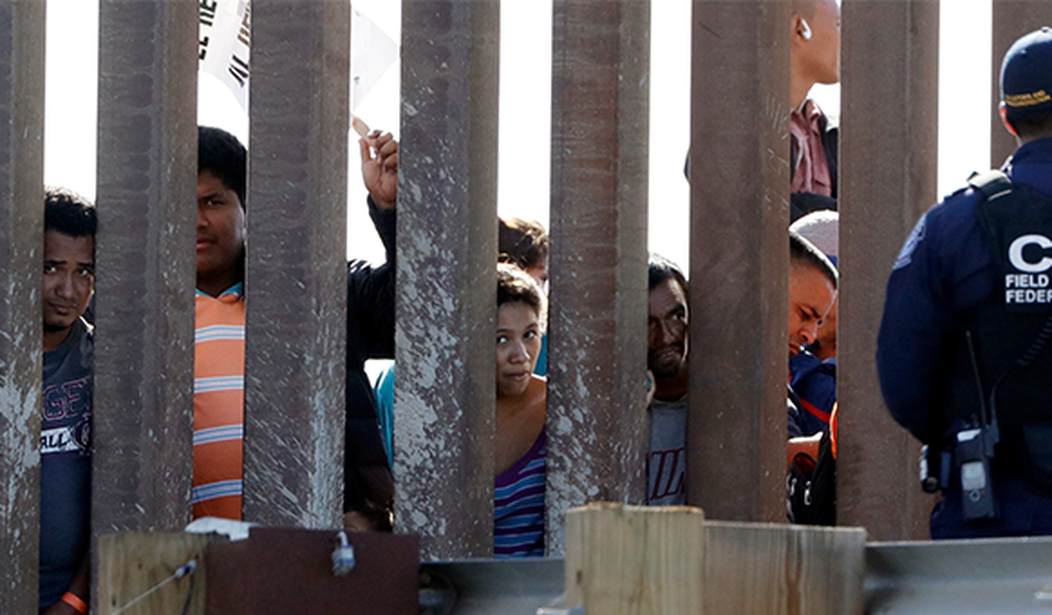The Homeland Security Committee on Wednesday released a report entitled, "Stopping Terrorist Travel Through Illicit Pathways to the Homeland," which goes into great detail about the need for border security and immigration reform.
Since Sept. 11th, terrorists have looked at new ways to come to the United States. One of the most common ways they get to America is through our Southern border. These people, called Special Interest Aliens (SIAs), are a threat to our nation.
One SIA who spoke with the committee explained how he or she came to the United States:
Here's how terrorists are coming to the United States via our southern border. pic.twitter.com/8fp7oOF0eT
— Beth Baumann (@eb454) January 3, 2019
"The threat posed by the existence of illicit pathways into the United States highlights that border security is national security, as terrorist groups seek to exploit vulnerabilities amongst our neighbors to fund, support, and commit attacks against the Homeland," the report said.
The Committee explained why terrorists are utilizing Central America as a means of gaining entry into America:
Latin America and the Caribbean are the major intial entry points to the Western Hemisphere for SIAs. Many countries in the region continue to face economic and governance challenges, as well as consistently high levels of violent crime. Additionally, many of the countries in the Americas have lenient visa and immigration policies in place, even for individuals from “special interest” countries. Lastly, the frequency of international flights from “special interest” regions around the world into Latin America and the Caribbean continues to increase. These regional issues create an attractive environment for illicit travel of SIAs and other nefarious actors into the Western Hemisphere with the end goal of reaching the United States.
While there are multiple points of arrival into the Western Hemisphere, Brazil is the top destination for SIAs entering the region. This is due to the ease of international travel into São Paulo, as well as the relaxed visa, immigration, and asylum policies of the country. From Brazil, SIAs continue their travel north through South America, passing through multiple countries that often overlook their movement for various reasons, sometimes with the help of TCOs and smugglers. There are a variety of routes that can be used to reach Central America given the size and diverse geography of South America. Due to the natural chokepoint of the Darien Gap from South America into Central America, Colombia and Panama are critical partners. Their strategic location ensures that nearly all SIAs seeking to enter Central America from South America will have to transit one of these two countries. Thus, the United States has rightly prioritized ensuring that Colombia and Panama are among our strongest law enforcement allies in the Western Hemisphere, along with our southern neighbor, Mexico.
Recommended
After being briefed by American and foreign national security officials, the Committee came up with key recommendations ahead of the new Congress:
• Continue utilizing the Biometric Identification Transnational Migration Alert Program (BITMAP) - Under this program, other partner countries put in biometric data on identified SIAs who are enroute to the United States.
• Authorize CBP’s Immigration Advisory Program (IAP) - Under IAP, border patrol agents are deployed to airports around the world. Their job is to review passenger information for those traveling on U.S.-bound flights. They can assist airlines and various governments on whether or not the person flying is a security risk. The program is currently implemented at 12 foreign airports.
• Authorize DHS’ Office of Biometric Identity Management (OBIM) - This program analyzes biometric data and shares the data such as fingerprint records, across the federal government, enabling larger efforts including the implementation of biometric entry/exit at ports of entry.
• Conduct U.S. Southwest Border Threat Analysis
• Conduct U.S. Maritime Border Threat Analysis
• Conduct U.S. Port of Entry Threat Analysis
• Authorize DHS Repatriation Authority - DHS lacks the fund and authority to help out other countries who are deporting an SIA back to their home country. Many times the United States has to utilize their ties to the person's home country to broker a repatriation.
• Better Support Transnational Criminal Investigative Units (TCIU) - This program provides foreign law enforcement officials, customs officers, immigration officers, and prosecutors with ICE training. The people are vetted, trained and then are able to provide vital information to ICE before an SIA made their way to the United States.
• Increase Interagency Coordination Through a Western Hemisphere Task Force
• Create Inter-American Information Sharing System
Here's the full report:

























Join the conversation as a VIP Member